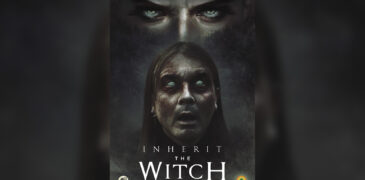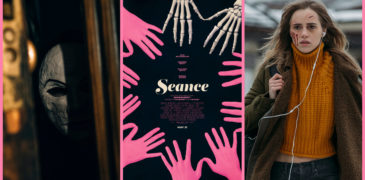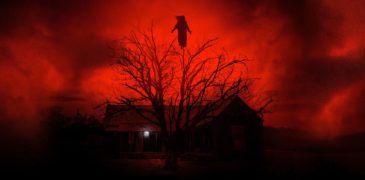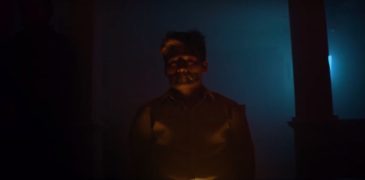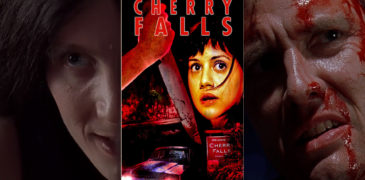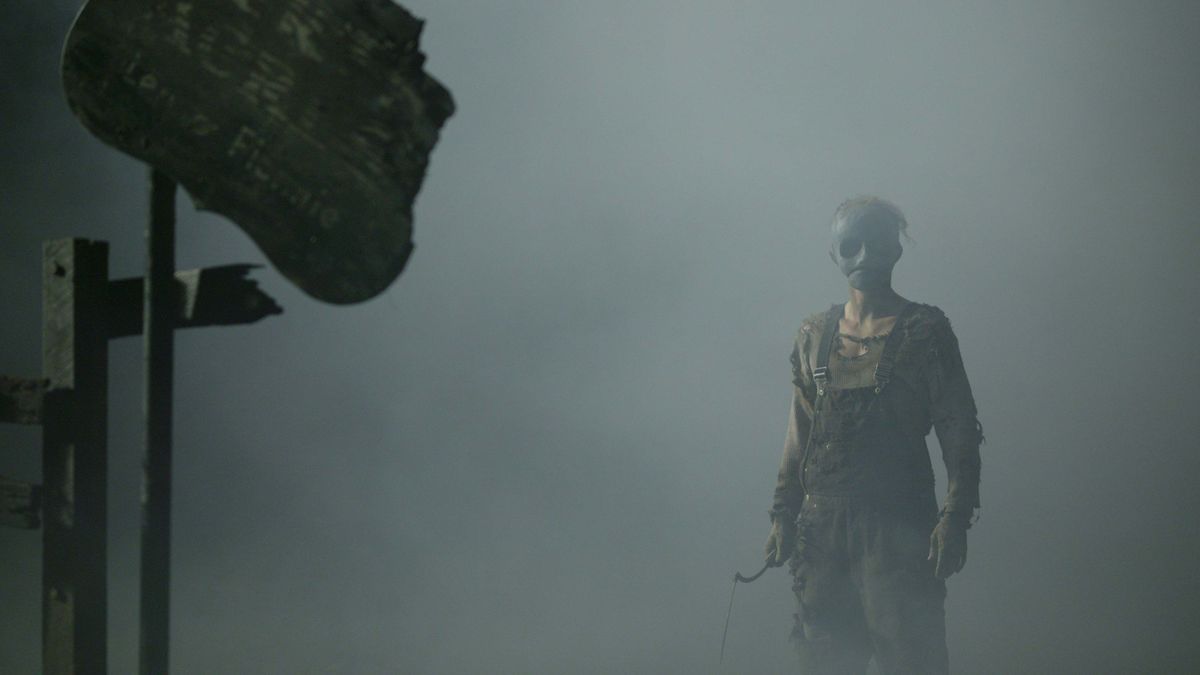
Like all genres, horror owes much of its success to a handful of tropes that can be worked and reworked time and again. Two popular examples are the slasher archetype as well as the found footage film. The former dates to the early 1960s, but John Carpenter’s Halloween (1978) kicked off the craze. Friday the 13th (1980) and A Nightmare on Elm Street (1984) quickly followed, and countless Italian giallo films also deserve spots under the slasher umbrella. Found footage films originated in the ’60s, too. Shirley Clarke’s experimental picture The Connection (1961), which is not a horror film, arguably takes first place. In literature, epistolary novels and short stories purportedly comprised of haunted characters’ last words have been staples of horror for centuries. In cinema, 1980 birthed the wildly controversial Cannibal Holocaust, but it was The McPherson Tape (1989) that cemented the structure, and The Blair Witch Project (1999) that popularised it.
Inevitably, popular genres and tropes lose their steam, causing an audience to lose interest. Films like Scream (1996) both satirise and revitalise their chosen genre – in this instance, the slasher film – by not only effectively deconstructing the narrative, but also establishing themselves as competent examples of the genre. Outside of horror, films like Galaxy Quest (1999) pull this off neatly. Scott Glosserman’s Behind the Mask: The Rise of Leslie Vernon picks apart both the slasher and the found footage film, offering a fresh take on both, and serving as a true love letter to horror as a whole. Almost exactly 16 years since its South by Southwest film festival premiere, Behind the Mask screens as part of the fifth annual Unnamed Footage Festival. It remains a quality satirical piece, and an intelligent look at the inner workings of a slasher film.
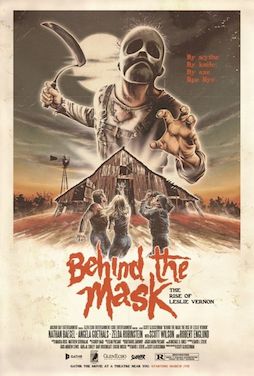
Behind the Mask – 2012 rerelease poster designed by Justin Osbourn
Haddonfield. Crystal Lake. Elm Street. Each has been terrorised by now iconic figures. Glen Echo, Maryland, is the next location. Legend has it that a young boy murdered his parents, and was in turn murdered by the townsfolk. However, Leslie Vernon (a magnetic Nathan Baesel) has returned, and his rise to the slasher hall of fame starts now. He recruits a group of amateur filmmakers to document the historic event, from the stalking of victims, and encounters with his nemesis, to the inevitable bloody finale. Torn between remaining objective and preventing the loss of innocent lives, the filmmakers may well ruin the organised chaos of Leslie’s inaugural spree. In the end, will these outsiders come to regret their peek behind the mask?
We quickly establish that, in this universe, all the slashers are real. Freddy Krueger, Michael Myers, Jason Voorhees (and, presumably, his mother) terrorised teens and cemented themselves as icons – even Chucky gets a mention. Leslie Vernon has been inspired to write Glen Echo a new story, and give the locals their own bogeyman. Baesel is electric in the role. He snaps between charismatic chit-chat, infectious glee, and threats of violence with ease; not once does this seem forced or stretched. Moreover, his chemistry with Angela Goethals as Taylor Gentry (her relationship with the cameramen recalls that of The Blair Witch Project’s trio, though far less upsetting) practically leaps off the screen. It is so strongly and quickly established, that her forgiving Leslie’s burst of violence – from which her friends do not protect her – feels believable and genuine.
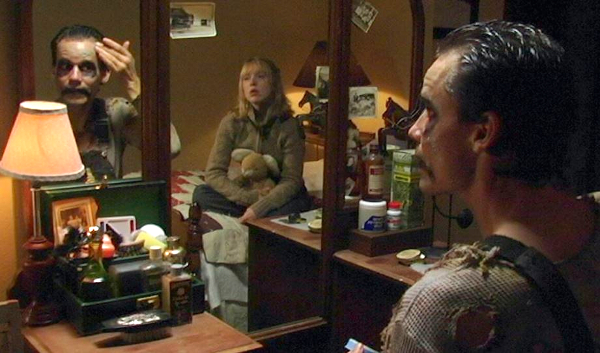
Behind the Mask – Taylor watches Leslie prepare
Alongside the classic slashers sits Leslie’s mentor. Implied to be Black Christmas’ (1974) villain, Eugene (Scott Wilson) is retired from the business, but remains handy with a knife. He and his wife, Jamie (Bridgett Newton) enthusiastically support Leslie, offering tips and suggestions wherever they can. Together, they form a strangely sweet parental unit. On the offensive, we have Doc Halloran (a criminally underused Robert Englund, chewing the most delicious scenery), whom Leslie calls his Ahab: ostensibly representing all that is good in the world, but whose literary counterpart suggests obsession. Halloran is essentially the Samuel Loomis of the piece, right down to Donald Pleasance’s trench coat. Though he does not figure as heavily into the plot as his introduction suggests, Halloran is a key piece of the slasher.
Behind the Mask is not strictly a found footage film. Partly viewed through the documentarian’s lens, and partly in a more traditional style, Leslie’s story is both an intimate look at an artist’s work, and a horror fan’s dream slasher. Taylor and her cameraman watch Leslie move catlike through a quiet library, preparing the scene for his ‘survivor girl’ (we would now call her a ‘final girl’). Then, the tone shifts, and we are suddenly in a movie. These moments of heightened reality work well for the most part, and they capture the tone of lesser slashers. The librarian (a fabulous Zelda Rubinstein) intones the dark history of Leslie Vernon to a pitch-perfect, overwrought teenager. When Leslie at last emerges, the stage is set for his first murder.
Behind the Mask: The Rise of Leslie Vernon – trailer
It must be noted that Behind the Mask is not a deconstruction; it is explicitly a construction of a slasher. We follow Leslie as he puts together each set piece, plans each death, and pre-emptively thwarts each escape attempt. He reveals trade secrets to his new friends. Why do the lights flicker? How does the killer keep up with his victims? Why can they never find a torch that works? Leslie graciously explains each and every trick, and even walks us through the site of his planned spree. In this sense, the final act may disappoint some viewers, especially those expecting a twist, or a subversion of expectations. On the contrary, the film is rigid. First, it shows us what Leslie is going to do, and how he is going to do it. Then, Leslie does it.
Unfortunately, the third act – and, therefore, the spree itself – is the weakest. Having totally eschewed the found footage format (the better to present a cinematic slaughter), the film loses its edge in this section. Glosserman and David J. Stieve’s screenplay stumbles, that aforementioned rigidity working against them for the first time. The sequence is almost humourless, for one, which would not be a problem if the humour (to put it charitably) that remains did not comprise a camera repeatedly nosing up a teenager’s skirt. In addition, despite having learned Leslie’s tricks, Taylor still falls for them. He blunted the pick, loosened the head of the sledgehammer, and sabotaged the axe. Why, then, does she immediately reach for the axe? It is endlessly frustrating that the climactic scene falls so flat.
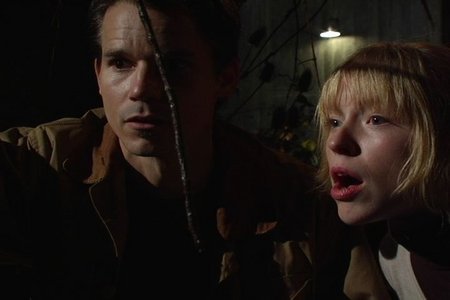
Behind the Mask – Leslie builds the mythos
Despite its shortcomings, Behind the Mask is a fascinating piece of work. Some of the actors are weak, and the damp squib of a climax hurts, but as an exploration of the genre, and of villainy as humanity in a different mask, it is highly engaging. Its villain is humanised, compelling. His off-kilter delivery of practical jokes recalls Ann Rule’s descriptions of her friend Ted Bundy. Leslie’s costume and makeup, designed by E. Larry Day, work in conjunction with Baesal’s physicality to create a truly uncanny figure. On top of that, there are so many genuine moments of humour and warmth that, just like the filmmakers, we find it hard to believe that Leslie will go through with it. Taylor and her friends get too close to Leslie; they allow the excuse of journalistic objectivity to cloud their judgement. Eugene’s advice echoes in the moment of hesitation before the cameras switch off: “Run like a motherfucker, and don’t stop until the sun comes up.”
Behind the Mask: The Rise of Leslie Vernon screens as part of this year’s Unnamed Footage Festival. It is also available on Shudder.
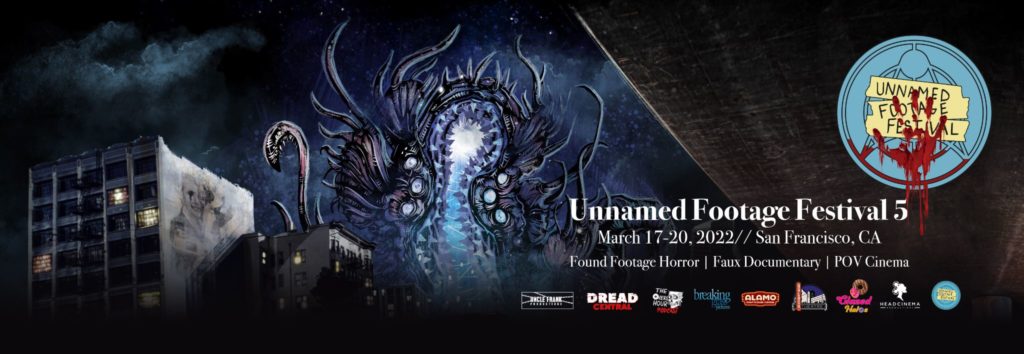
More Film Reviews
Inherit the Witch (2024), directed, co-written by, and starring Cradeaux Alexander, is an ambitious attempt at psychological horror through means of generational trauma. Filmed almost entirely with handheld cameras –… Two of the things I liked about You’re Next (directed by Adam Wingard, written by Simon Barrett) is a crafty and feisty final girl and a quick-witted script. With Seance,… Off of the back of our best of 2020 list came a slew of recommendations through both our facebook pages, The Yurei and The Banshee. Out of multiple titles recommended,… The world of short films has always been an exciting one for those willing to embrace the format – both in giving insight into future filmmakers and offering short narrative… 1996’s Scream was a game-changer for the slasher genre. By playing with well-established conventions, the movie directly engaged the audience in a conversation about what they were watching and toyed… Japanese cinema frequently uses Westerners as extras, so much so that is common for people staying in Japan for an extended period to up with an agency and fill background…Inherit the Witch (2024) Film Review – An Overall Disappointment
Seance (2021) Film Review – A Giallo Flick Married To a Teen Slasher
The Dark and The Wicked (2020) Film Review: Unrelenting Evil, Uncompromising Terror
Cult Affairs Short Film Review – Devil in the Details
Cherry Falls (2000) Film Review – Be True to Your School
Schoolgirl Apocalypse (2011) Film Review – School’s Out Forever
Isabelle is a writer from the UK who enjoys alternative manga and horror films. When not writing, you can probably find Isabelle buying books or obsessing over Martin and Lewis.
